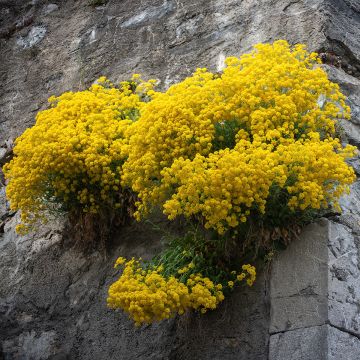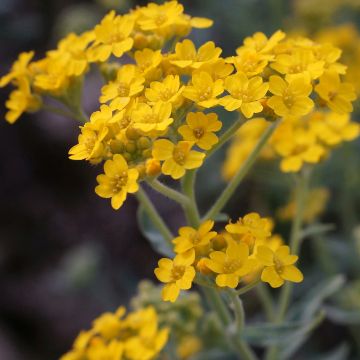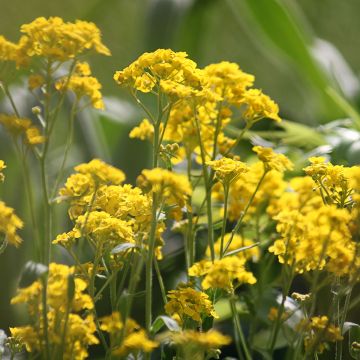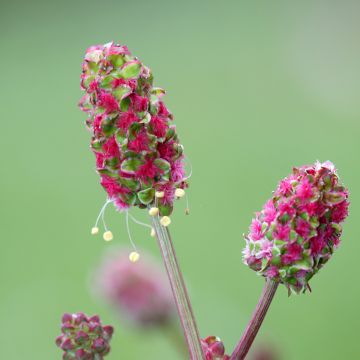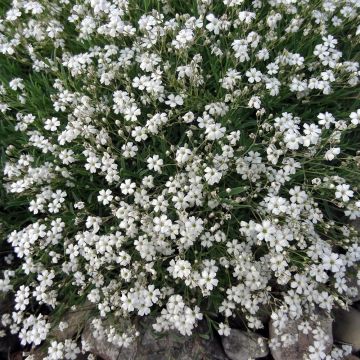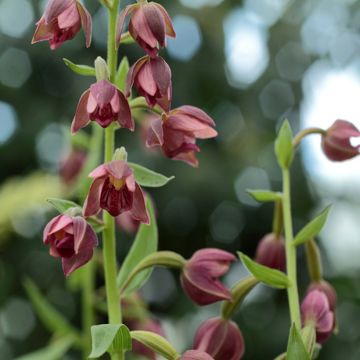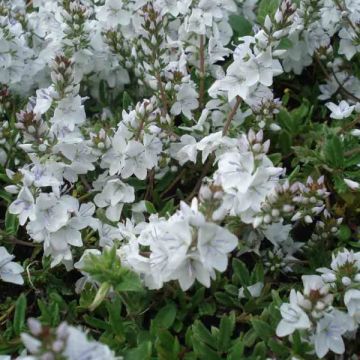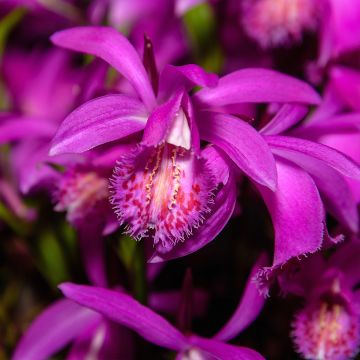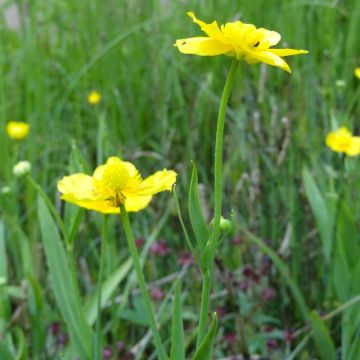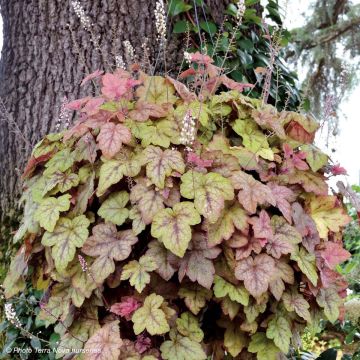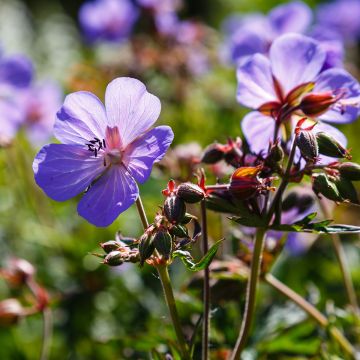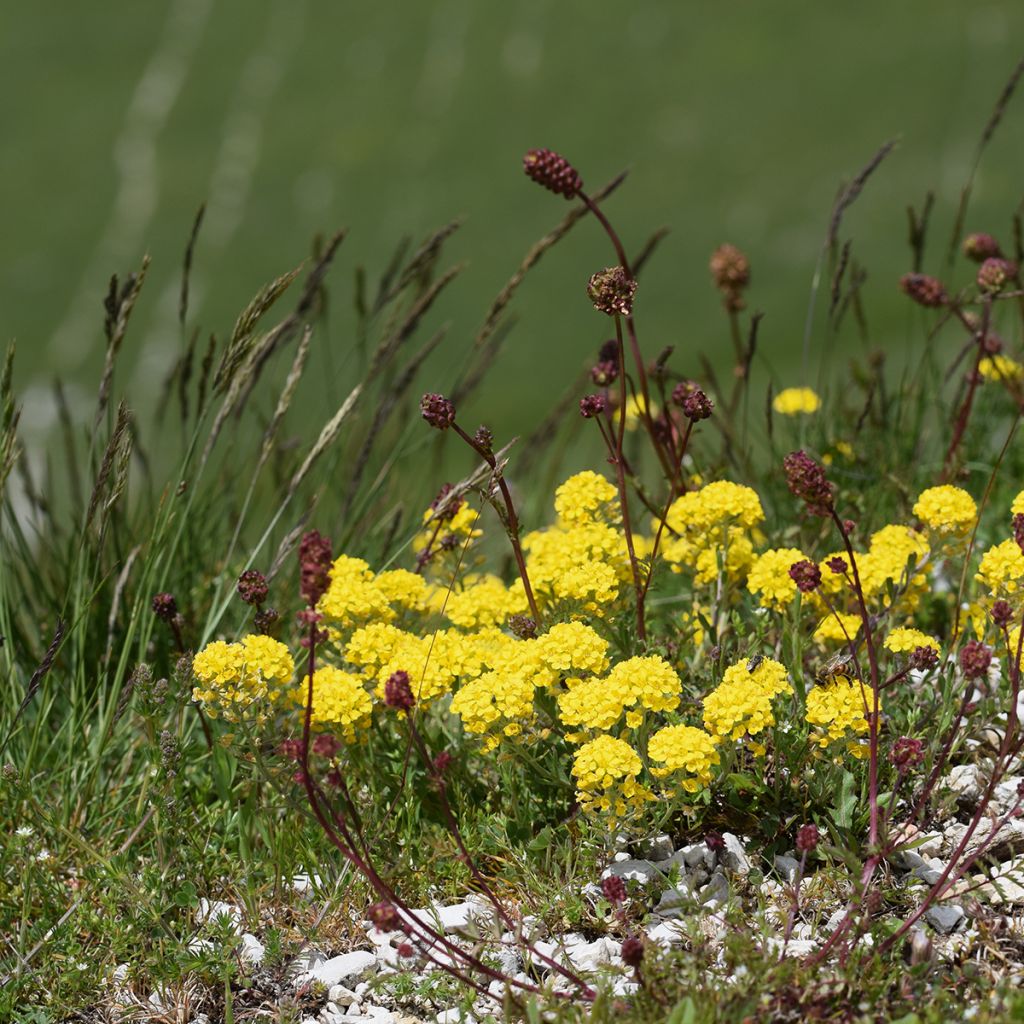

Alyssum montanum Berggold
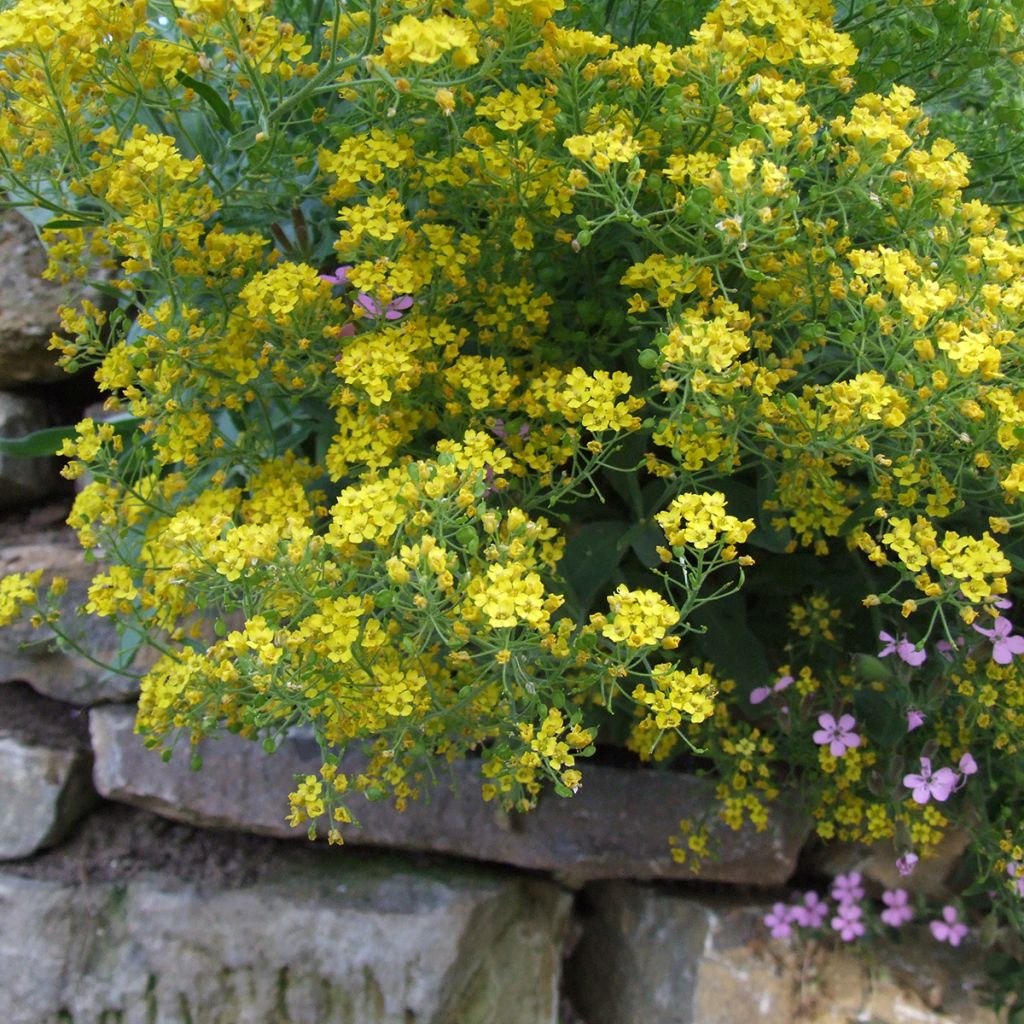

Alyssum montanum Berggold
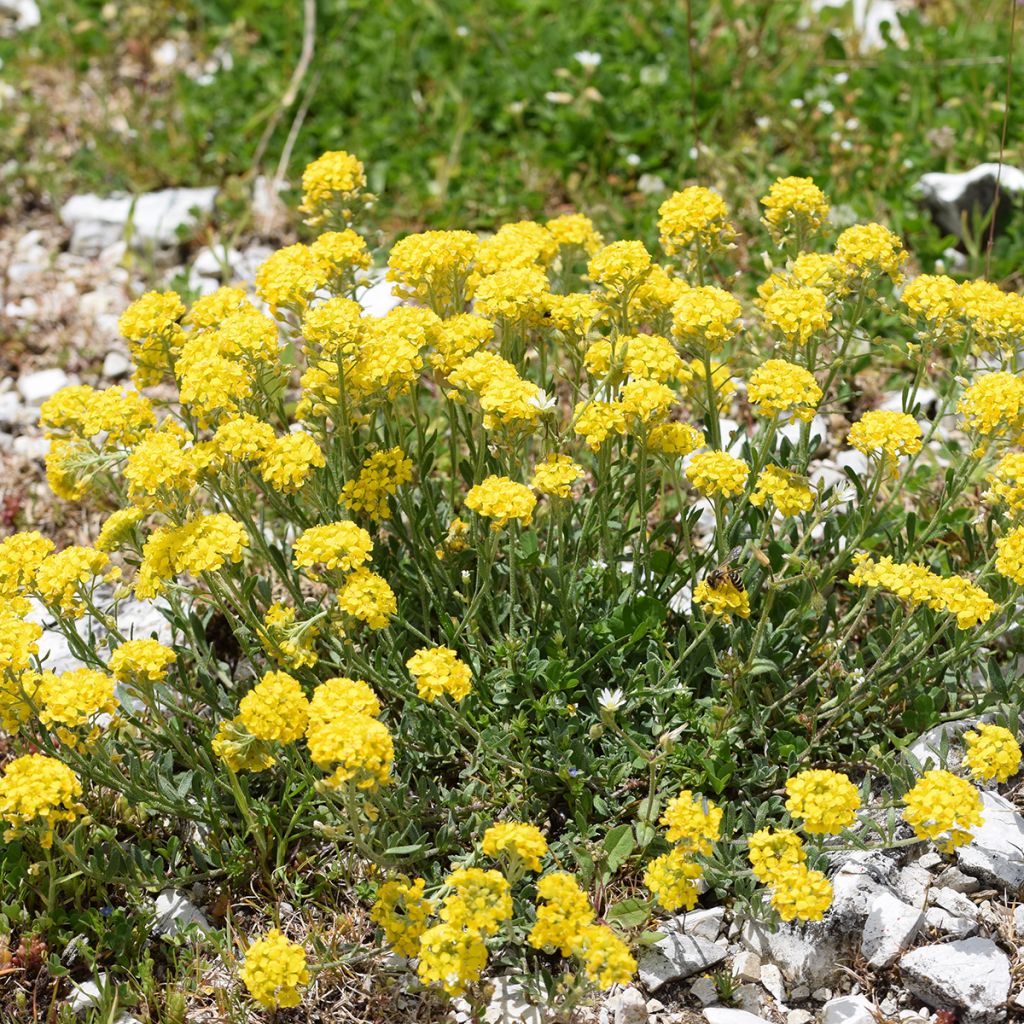

Alyssum montanum Berggold
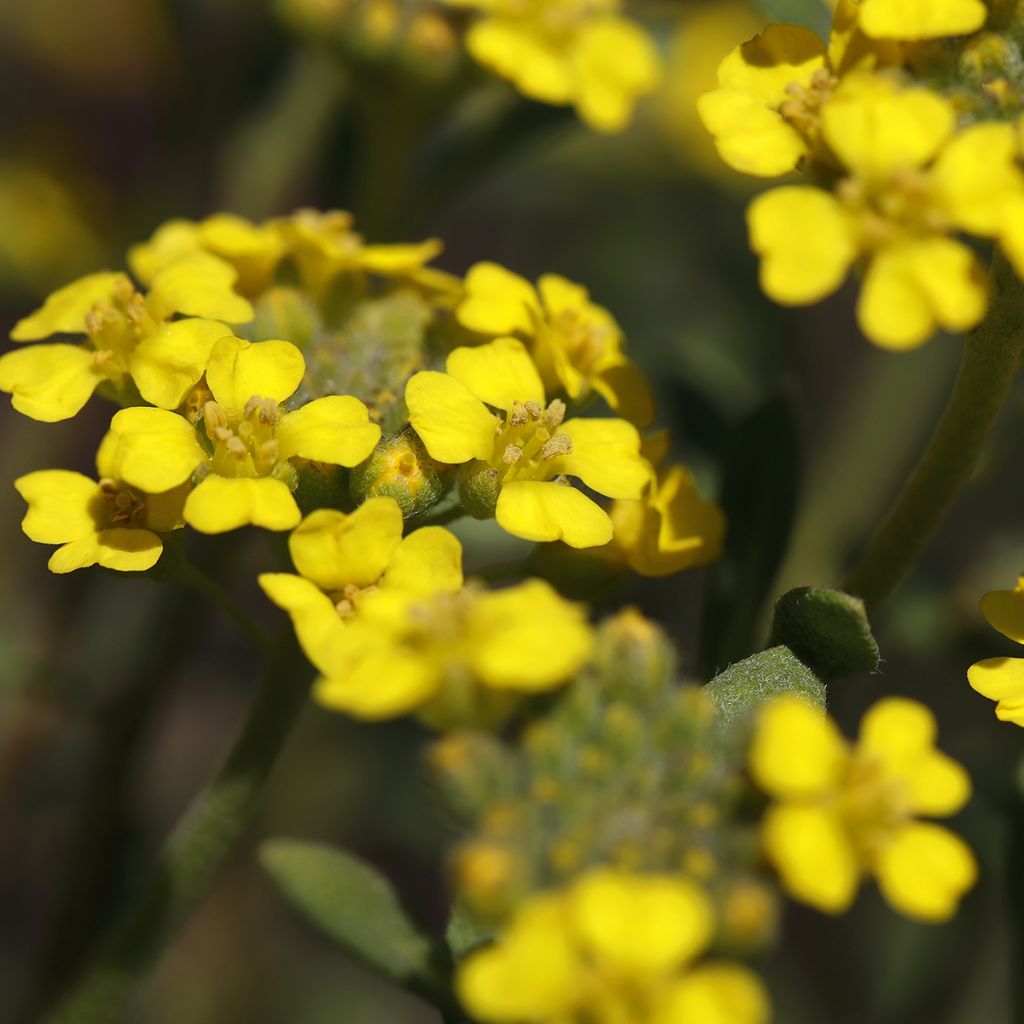

Alyssum montanum Berggold
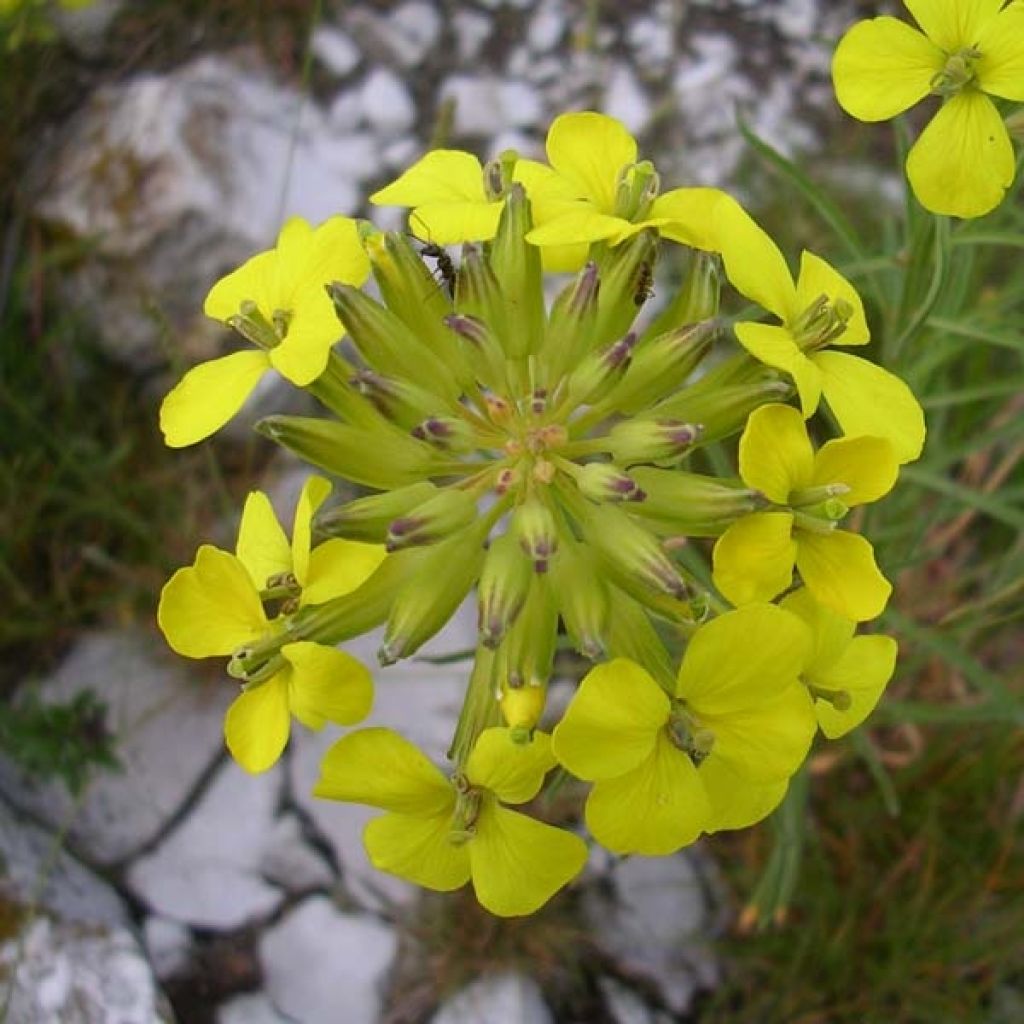

Alyssum montanum Berggold
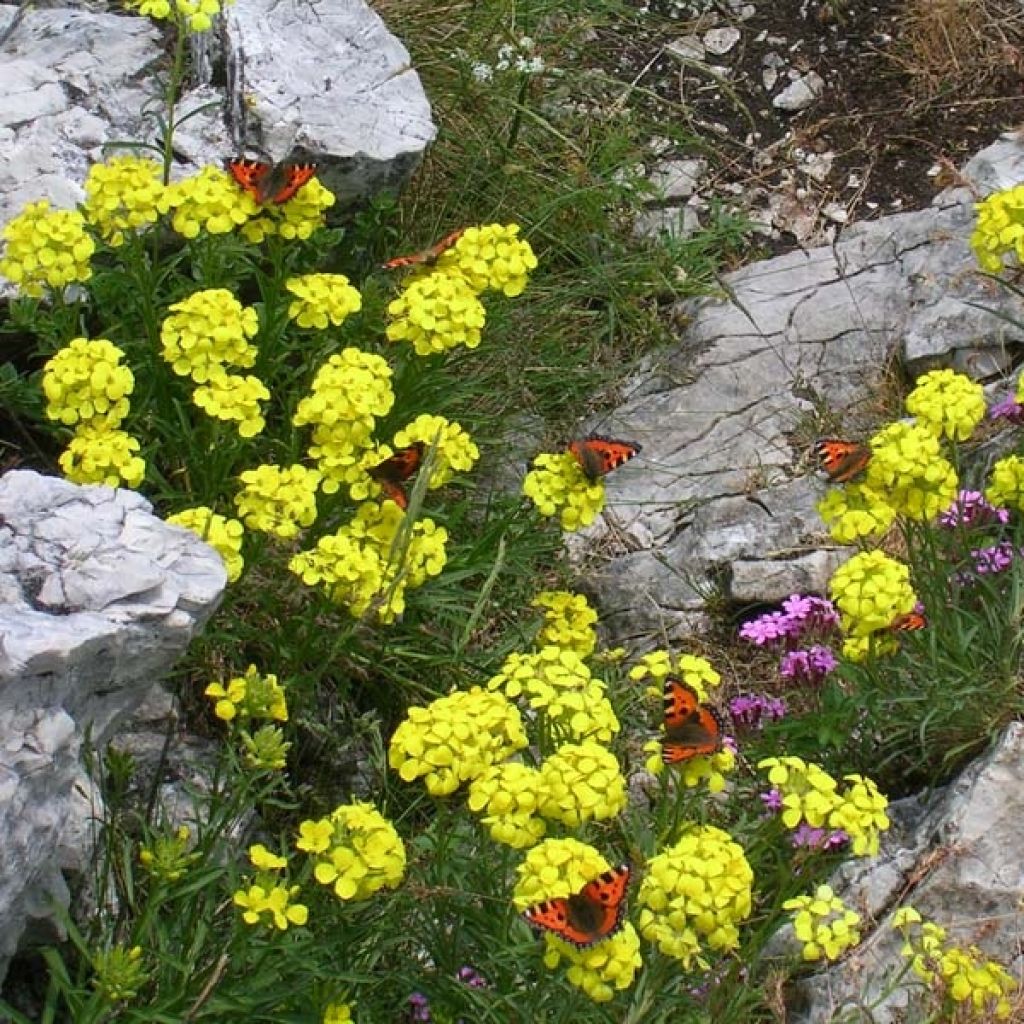

Alyssum montanum Berggold
Alyssum montanum Berggold
Alyssum montanum Berggold
Mountain Alyssum, Mountain Gold Dust
Planted by the pond, currently in flower, very enjoyable. I would recommend getting more.
Graziella, 02/05/2023
This item cannot be shipped to the selected country
Delivery charge from €5.90
More information
Schedule delivery date,
and select date in basket
This plant carries a 12 months recovery warranty
More information
We guarantee the quality of our plants for a full growing cycle, and will replace at our expense any plant that fails to recover under normal climatic and planting conditions.
From €5.90 for pickup delivery and €6.90 for home delivery
Express home delivery from €8.90.

Does this plant fit my garden?
Set up your Plantfit profile →
Description
The wide grey-green carpets of this small mountain perennial, called Alyssum montanum Berggold, suddenly turn to golden yellow, creating a dazzling display. Generous and undemanding, this naturally compact alyssum blooms in late spring, surrounded by a scent of honey. Perfect in rock gardens and flower pots, it is a robust and sturdy plant, resistant to bad weather, very useful in mountain gardens and rocky, not too dry soils.
Alyssum montanum, also the mountain alyssum, is a perennial plant with semi-woody stems at the base, belonging to the Brassicaceae family. This plant, native to central and southern Europe, is also found in western Asia and North Africa. In its natural environment, it occupies sandy or rocky places in mountainous regions where summer rainfall allows its survival.
This plant is widely cultivated in gardens and has given rise to numerous horticultural varieties. 'Berggold' Alyssum forms woody-based, compact and spreading herbaceous clumps over time, 15 to 20 cm (6 to 8in) tall and 50 cm (20in) wide. Resembling a weed at first, it then transforms into an imposing clump of branching stems, initially lying down then upright, adorned with greenish-white, alternate, simple and entire leaves, narrow (from lanceolate to linear), attenuated towards the base and bearing star-shaped hairs. The flowering period extends from May to July, completely covering the plant with bright lemon yellow to golden yellow flowers with distinctly notched petals, that are quite large considering the size of the plant, and have a slight honey scent.
Succeeding forsythias and accompanying tulips, commonly used in gardens, mountain alyssums thrive in well-drained, not too dry soils. They are perfect plants for covering the tops of walls, the spaces between rocks in rock gardens, like aubrietas and bellflowers. They adorn the base of perennials (wallflowers, hollyhocks) and small bushes like ballota, shrubby salvias, lavenders or caryopteris. They can also be planted along pathways, in well-drained soil. They also perform well in pots and flower boxes.
Report an error about the product description
Alyssum montanum Berggold in pictures


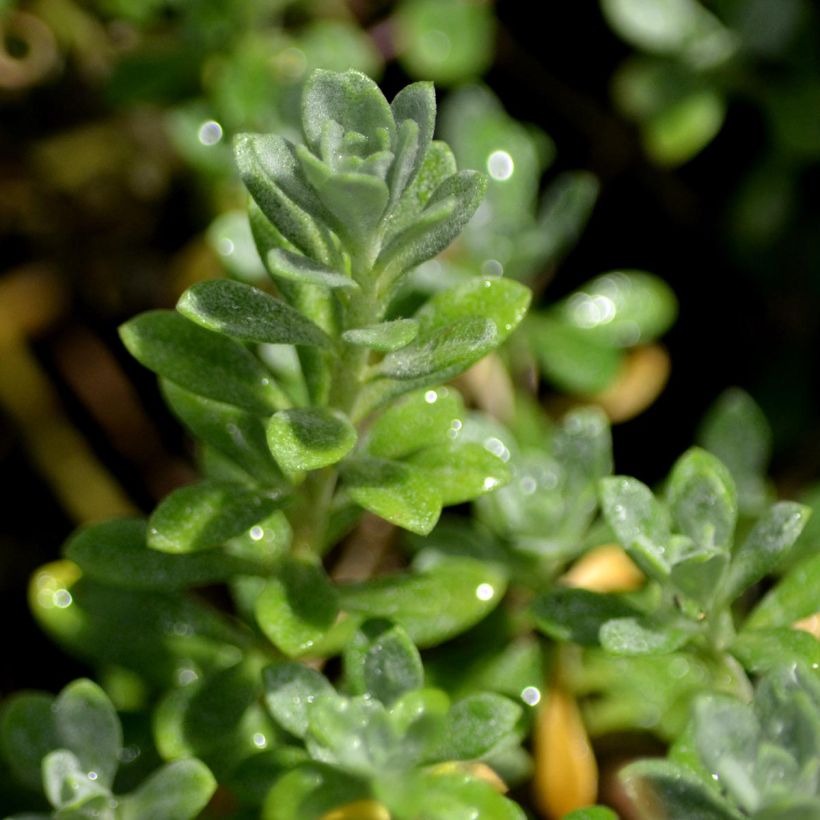



Flowering
Foliage
Plant habit
Botanical data
Alyssum
montanum
Berggold
Brassicaceae
Mountain Alyssum, Mountain Gold Dust
Aurinia montanum Berggold
Alps
Other Alyssum
Planting and care
Alyssum Montanum Berggold thrives in full sun in fairly rich and well-drained sandy soil, which can be dry and rocky. In case of hot and dry summers, it will appreciate some waterings. To plant your Alyssum, prepare a 20 cm (8in) planting hole, crumbling the soil well and placing adding a fertilizer such as blood meal or bone meal at the bottom. Position your plant in the whole by covering the top of the root ball with 3 cm (1in) of soil. Refill and water copiously to remove air pockets. In dry weather, it is necessary to water regularly for a few weeks to facilitate rooting. Pinch the clumps after flowering to maintain compact vegetation. In June, carry out light pruning before seed formation begins to promote flowering again. Alyssum can be prone to mildew and white rust. Watch out for flea beetles and aphids that can damage the plant.
Planting period
Intended location
Care
-
, onOrder confirmed
Reply from on Promesse de fleurs
Spring flowering perennials
Haven't found what you were looking for?
Hardiness is the lowest winter temperature a plant can endure without suffering serious damage or even dying. However, hardiness is affected by location (a sheltered area, such as a patio), protection (winter cover) and soil type (hardiness is improved by well-drained soil).

Photo Sharing Terms & Conditions
In order to encourage gardeners to interact and share their experiences, Promesse de fleurs offers various media enabling content to be uploaded onto its Site - in particular via the ‘Photo sharing’ module.
The User agrees to refrain from:
- Posting any content that is illegal, prejudicial, insulting, racist, inciteful to hatred, revisionist, contrary to public decency, that infringes on privacy or on the privacy rights of third parties, in particular the publicity rights of persons and goods, intellectual property rights, or the right to privacy.
- Submitting content on behalf of a third party;
- Impersonate the identity of a third party and/or publish any personal information about a third party;
In general, the User undertakes to refrain from any unethical behaviour.
All Content (in particular text, comments, files, images, photos, videos, creative works, etc.), which may be subject to property or intellectual property rights, image or other private rights, shall remain the property of the User, subject to the limited rights granted by the terms of the licence granted by Promesse de fleurs as stated below. Users are at liberty to publish or not to publish such Content on the Site, notably via the ‘Photo Sharing’ facility, and accept that this Content shall be made public and freely accessible, notably on the Internet.
Users further acknowledge, undertake to have ,and guarantee that they hold all necessary rights and permissions to publish such material on the Site, in particular with regard to the legislation in force pertaining to any privacy, property, intellectual property, image, or contractual rights, or rights of any other nature. By publishing such Content on the Site, Users acknowledge accepting full liability as publishers of the Content within the meaning of the law, and grant Promesse de fleurs, free of charge, an inclusive, worldwide licence for the said Content for the entire duration of its publication, including all reproduction, representation, up/downloading, displaying, performing, transmission, and storage rights.
Users also grant permission for their name to be linked to the Content and accept that this link may not always be made available.
By engaging in posting material, Users consent to their Content becoming automatically accessible on the Internet, in particular on other sites and/or blogs and/or web pages of the Promesse de fleurs site, including in particular social pages and the Promesse de fleurs catalogue.
Users may secure the removal of entrusted content free of charge by issuing a simple request via our contact form.
The flowering period indicated on our website applies to countries and regions located in USDA zone 8 (France, the United Kingdom, Ireland, the Netherlands, etc.)
It will vary according to where you live:
- In zones 9 to 10 (Italy, Spain, Greece, etc.), flowering will occur about 2 to 4 weeks earlier.
- In zones 6 to 7 (Germany, Poland, Slovenia, and lower mountainous regions), flowering will be delayed by 2 to 3 weeks.
- In zone 5 (Central Europe, Scandinavia), blooming will be delayed by 3 to 5 weeks.
In temperate climates, pruning of spring-flowering shrubs (forsythia, spireas, etc.) should be done just after flowering.
Pruning of summer-flowering shrubs (Indian Lilac, Perovskia, etc.) can be done in winter or spring.
In cold regions as well as with frost-sensitive plants, avoid pruning too early when severe frosts may still occur.
The planting period indicated on our website applies to countries and regions located in USDA zone 8 (France, United Kingdom, Ireland, Netherlands).
It will vary according to where you live:
- In Mediterranean zones (Marseille, Madrid, Milan, etc.), autumn and winter are the best planting periods.
- In continental zones (Strasbourg, Munich, Vienna, etc.), delay planting by 2 to 3 weeks in spring and bring it forward by 2 to 4 weeks in autumn.
- In mountainous regions (the Alps, Pyrenees, Carpathians, etc.), it is best to plant in late spring (May-June) or late summer (August-September).
The harvesting period indicated on our website applies to countries and regions in USDA zone 8 (France, England, Ireland, the Netherlands).
In colder areas (Scandinavia, Poland, Austria...) fruit and vegetable harvests are likely to be delayed by 3-4 weeks.
In warmer areas (Italy, Spain, Greece, etc.), harvesting will probably take place earlier, depending on weather conditions.
The sowing periods indicated on our website apply to countries and regions within USDA Zone 8 (France, UK, Ireland, Netherlands).
In colder areas (Scandinavia, Poland, Austria...), delay any outdoor sowing by 3-4 weeks, or sow under glass.
In warmer climes (Italy, Spain, Greece, etc.), bring outdoor sowing forward by a few weeks.

































